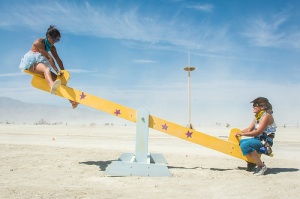After our class this week, I found myself a little relieved. When first signing up for the course, I thought to myself “well, I’m not 100% sure what blended learning is, but I guess I’ll find out.” After our first class, many questions popped up such as: how in the world will I design a blended course that I will be able to use as a primary teacher? And, not only as a primary teacher, but as a teacher of the extremely little guys – kindergarten students who aren’t as worried about reading as they are who took their favourite car during center time.

Photo Credit: quinn.anya Flickr via Compfight cc
Honestly, one of my biggest fears about blended learning is that it is often very personal and personalized. And therefore, as Downes wrote: if people are to become effective learners, they need to be able to learn on their own. Learning on your own in younger grades is amazing to see. It’s what early years educators try to provoke with invitations to learn.
As Nicole wrote, learning is a process. Students, at all levels, kindergarten to university, need scaffolding in the learning process that takes time. Therefore, blended learning, in any capacity, is something that can be done with all ages, although it might look very different! In my last blog post, I said that adapting for young learners was something that I worried about. Note the past tense. Worried.
However, once I read the article from Bates this week, I was not as worried. After reading, I thought:
Blended learning is an easy mixture: take one part teaching and combine it with as many parts necessary of technology, either through technology aids (such as smartboards or iPads), flipped classrooms or learning management systems.
Once I realized that blended learning was what was already happening in my kindergarten classroom, I was able to imagine designing a course to present to this class and possibly use to teach as well!
For this project, Angela and I decided to work together. We are both primary teacher although I teach French Immersion kindergarten and she teaches grade three in English. Although this is a large age gap, both groups of students have similar issues when thinking about designing a blended course.
For example, both kindergarteners and grade threes will need:
- a lot of pre-teaching and scaffolding to accomplish their goals
- safe spaces for sharing their knowledge
- an easy to use learning management system
- parent help with any aspects of a flipped model

Photo Credit: GSCSNJ Flickr via Compfight cc
With this in mind, what we have discussed so far is:
- Developing a course for grade three arts ed
- Working on a course for the visual strand of the Arts Ed curriculum
- Creating a few videos of techniques/background information for Arts Ed for parents and children to watch at home (flipped model)
- Using a form of learning management system for younger students.
While these are all very general, I feel like we have a good start. I am used to using SeeSaw in my kindergarten classroom, and I feel like it might be a good option. I saw from reading Amy’s post that she and Nicole have also considered using SeeSaw. The ease of documenting their learning is what is drawing me to SeeSaw currently.

Photo Credit: a.rey Flickr via Compfight cc
One thing that I am still grappling with the distinction between blended learning in delivery and blended learning in final product. Can you have one without the other?
I hope that Angela and I are able to quickly solidify our plans and develop an amazing course to share with all of you!

Awesome post Ellen. Look forward to working with you 🙂 angela
LikeLike
Really looking forward to seeing how this project progresses for you. It sounds like there are several of us gearing towards the younger grades – so hopefully we can help each other out if we hit any road blocks along the way.
LikeLike
I like how your quote looks, how did you do that?
LikeLike
Hey! Thanks so much! In the editor, there is a button along the top – the same place where you can find the button for bold and italics – the button is just an image of a quotation. If you click the button, it puts the paragraph you want into the quote box!
LikeLike
I appreciate that you are trying to decipher a definition of blended learning. I think perhaps with your question about the idea of blended learning through delivery and the product that maybe we can look at it all as a process. Delivery and product combined into the process as a whole? Looking forward to watching your course unfold! I too hope to be able to teach mine in May/June this year!
LikeLike
Pingback: Prototype, now with Feedback! – Ellen Lague